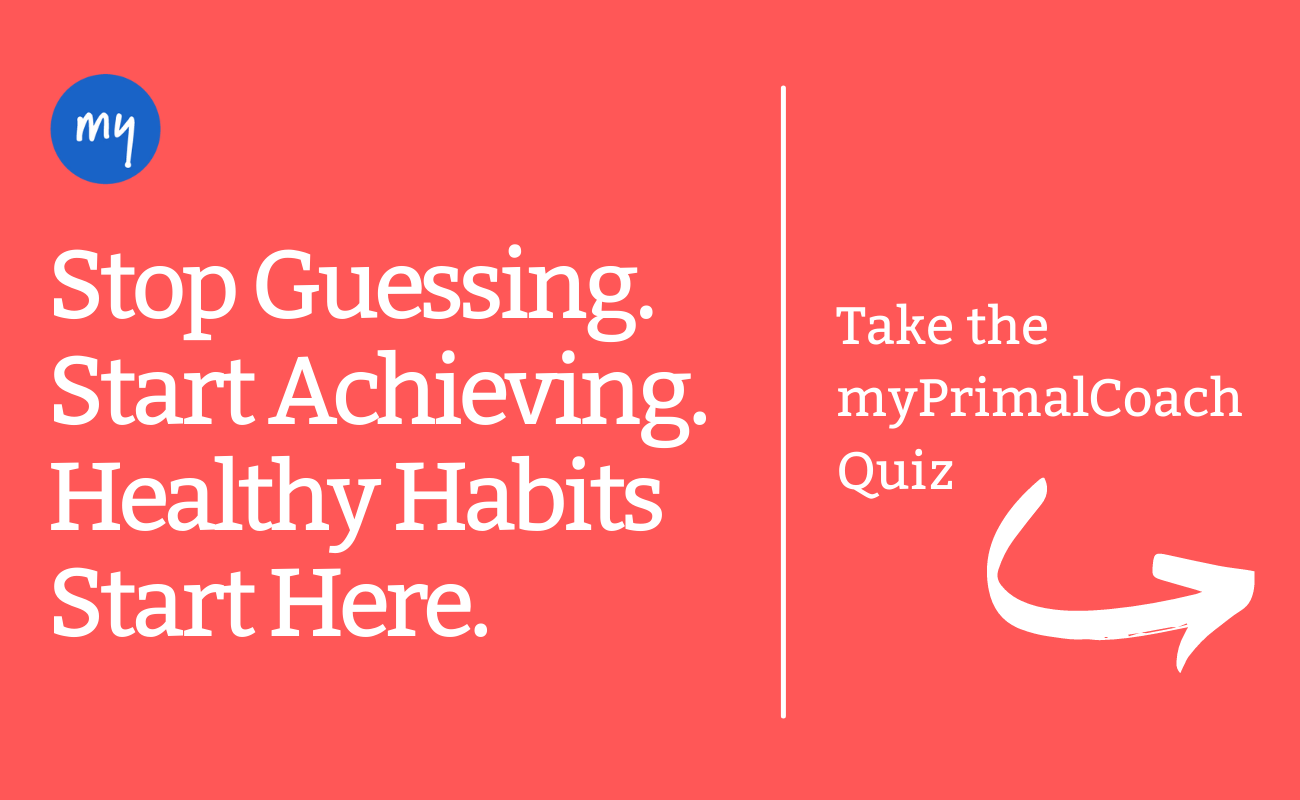Intermittent versus continuous exercise? If you’re unsure as to which style of fitness will give you the best bang for your buck, then this post is for you!
Like a lot of questions that come up in the health and wellness world, the answer is, it depends. How much time does your schedule allow for? Do you like the idea of taking quick exercise breaks during the day? Or do you prefer to get your workout done in the morning? Or at lunch? Or after the kids go to bed?
When you work with one of the health coaches here at myPrimalCoach, they’ll ask you questions like these to determine which type of exercise is better. Because, in all honesty, the best workout is the one you’ll actually do. Consistently.
That being said, there are pros and cons that come with each of these approaches. But before we get too deep, let’s back up a second and explain the difference between intermittent and continuous exercise, so we’re all on the same page.

What’s Intermittent Exercise?
Think of intermittent exercise as mini workouts performed a few times during the day. Instead of setting aside 30 minutes to an hour at a time to work out, these short bouts of exercise range from 5-10 minutes each. You don’t need any special equipment (or a trip to the gym) either. You could go for three 10-minute walks. Climb the stairs in between Zoom calls. Or set a timer for five minutes and rotate through the four Primal Essential Movements. Really, the possibilities are endless. And so are the health benefits as we’ll discuss here shortly.
What’s Continuous Exercise?
This is any activity that you do over a specific period without rest. Steady-state cardio is a good example of continuous exercise, also called continuous training. But any workout that you commit to for an extended time frame fits into this category. Think hour-long spin classes. Or 45-minute weight training sessions. Or hiking for two hours in the woods near your house. Even shoveling the driveway for half an hour counts. Keep in mind that continuous cardio is different than chronic cardio. If you want to read more about that latter, check out this article by fellow myPrimalCoach author (and cardio expert) Amy Lucas.
Which Is Better: Intermittent or Continuous Exercise (According to the Research)?
In one study, researchers compared the effects of continuous exercise versus intermittent exercise on aerobic capacity (that’s a marker of your fitness level), body weight and composition, and metabolic fitness (this includes things like blood pressure, glucose, and insulin levels) in sedentary, moderately obese women. One group of participants exercised continuously at 60-75% of their max aerobic capacity for 30 minutes per session, three times per week. The other group exercised intermittently, walking briskly for 15 minutes, twice a day, five days per week.
The results showed a 6% and 8% improvement in aerobic capacity for the continuous and intermittent groups, respectively. And HDL cholesterol (that’s the good kind) and insulin were significantly improved in both groups. But when it came to weight loss and fat loss, the group that exercised continuously had the greatest improvements.
In a nutshell, both approaches to working out work. However, this study found that the continuous exercise group had greater results when it came to weight and fat loss. And the intermittent exercise group had greater results for aerobic capacity.
There are tons of studies that suggest different outcomes though. Like this one that said intermittent exercisers had improved markers for long-term blood sugar control (subjects also reported a reduced perceived effort). And this one that said body fat percentage, waist circumference, and hip circumference were reduced for both groups. Just a little food for thought.
Intermittent Versus Continuous Exercise: A Benefits Comparison
The American Heart Association and CDC recommend a minimum of 150 minutes of moderate-intensity aerobic activity per week. Plus, two days per week of muscle strengthening exercises. But does it really matter how you get it done? And is one method better than the other? Check out the table below to compare the benefits of intermittent versus continuous exercise side-by-side.
Benefits comparison | Intermittent Exercise | Continuous exercise |
|---|---|---|
Increased Aerobic Capacity | ||
Improved HDL (good) Cholesterol | ||
Improved Insulin Sensitivity | ||
Increased Memory and Focus | ||
Less Perceived Time Commitment | ||
Increased Weight Loss and Fat Loss | ||
Improved Strength Gains | ||
Release of Feel-Good Endorphins |
Examples of Intermittent and Continuous Workouts
Taking a look at your own goals and schedule, you might choose intermittent workouts over continuous sessions. Or vice versa. And while you probably have a handle on the basics by now (intermittent exercises are shorter and spread out throughout the day and continuous exercise is a single longer workout completed once during the day), you may be looking for more recommendations on workouts you can do — and when you should do them. Check out some of our favorites below.
Intermittent workout examples:
- Completing back-to-back microworkouts
- Using the stairs instead of the elevator
- Doing jumping jacks, pushups, squats, or planks during commercial breaks
- Dancing to your favorite song
- Knocking out a few sets of calf raises, wall sits, and tricep dips in between meetings
Continuous workout examples:
- Riding your bike to do errands
- Taking a 45- to 60-minute yoga, weight training, or fitness class
- Jogging, running, or swimming for 45-minutes to an hour
- Going for a long walk with the dog
- Spending the afternoon gardening or hiking
Conclusion
So, which is better: intermittent or continuous exercise? There are pros and cons of each. But depending on your goals, your schedule, and really, your preference, you might find that one becomes more appealing than the other. Remember, the most effective workouts are the ones you’ll do consistently. So, if carving out an hour a day to hit the weights isn’t your thing, don’t underestimate the power of three 10-minute walks. Or a few microworkouts. Or dancing to your favorite playlist. Fitness isn’t about torturing or punishing yourself. It’s about finding that thing that works for you — then doing it on a regular basis.

